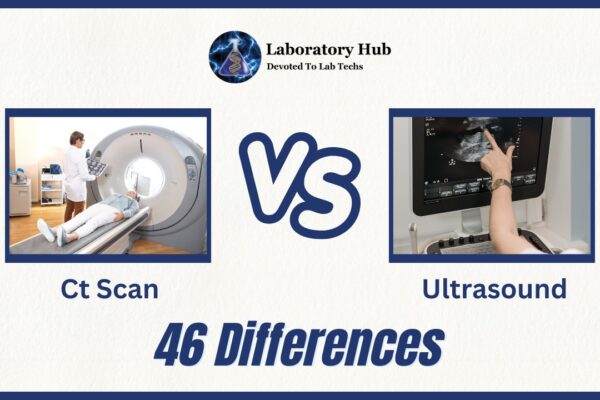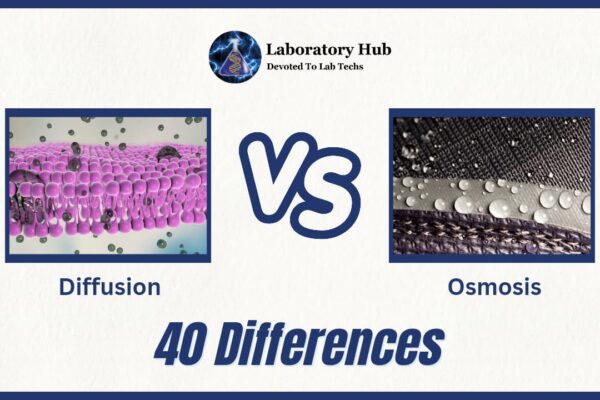Cytokines vs Chemokines- 15 Major Differences
Cytokines and chemokines orchestrate several physiological processes in immune responses and cellular communication. These signaling molecules control immune cell recruitment, activation, and coordination throughout homeostasis and disease. Cytokines and chemokines enhance immune response complexity and efficiency. Cytokines and chemokines are important in immunology and biomedical research, and this introduction highlights their distinctions and similarities.
Lymphocytes, macrophages, and dendritic cells release cytokines. They modulate immunological responses, inflammation, and hematopoiesis. Cytokines activate intracellular signaling cascades that control cell activity through target cell receptors. Interleukins, interferons, tumor necrosis factors, and transforming growth factors are cytokines. These substances affect neighboring or distant cells by autocrine, paracrine, or endocrine mechanisms.
However, chemokines, a subclass of cytokines, control leukocyte migration and homing to particular organs during inflammation and immune surveillance. Immune cells follow chemokine concentration gradients to infection or damage sites. Embryogenesis, angiogenesis, and cancer metastasis involve them. Chemokines bind to target cells’ G-protein-coupled receptors. Chemokines guide immune cells to inflammation and tissue damage by generating cytoskeletal rearrangements.
Cytokines and chemokines work together in immunological responses, sometimes synergistically or antagonistically. Cytokines govern chemokine synthesis and release, whereas chemokines affect cytokine expression and function. This complicated interaction between the two families of chemicals coordinates immune cell function, guaranteeing optimum immune surveillance, pathogen response, and tissue healing.
To understand immune dysregulation and design targeted therapeutics, cytokines and chemokines must be understood. These molecules have been used to diagnose and treat autoimmune, infectious, and cancerous illnesses. Biotechnology has enabled the creation of new cytokine and chemokine-based therapies, enabling more precise immunomodulation and customized treatment.
Cytokines and chemokines control immunological responses and cell activity. Chemokines control leukocyte migration and homing, while cytokines regulate several immunological processes. Their intricate connections and signaling networks enhance immune responses. Understanding cytokines and chemokines might lead to new immune-disease treatments.
Also Read: Bacteria vs Virus: 40 Differences
S. No. | Aspect | Cytokines | Chemokines |
1 | Definition | Small proteins or peptides involved in cell signaling and communication within the immune system and other tissues | A subset of cytokines specifically involved in guiding immune cell migration and trafficking |
2 | Function | Regulate immune responses, inflammation, cell growth, and differentiation | Control migration and positioning of immune cells during inflammation and immune responses |
3 | Production | Produced by various cell types, including immune cells, stromal cells, and endothelialcells | Produced by immune cells, primarily leukocytes and stromal cells |
4 | Receptors | Bind to specific receptors on target cells to initiate signaling cascades | Bind to specific chemokine receptors on immune cells to induce migration |
5 | Secretion | Released locally at the site of action or systemically into the bloodstream | Primarily act locally, guiding immune cells to specific tissues or inflammatory sites |
6 | Target Cells | Act on a wide range of cell types, including immune cells, stromal cells, and non-immune cells | Primarily act on immune cells, particularly leukocytes |
7 | Inflammatory Response | Can promote or suppress inflammation depending on the cytokine type | Play a crucial role in initiating and regulating the inflammatory response |
8 | Chemotaxis | Can induce chemotaxis (movement towards a chemical gradient) of various cell types | Specifically induce chemotaxis of immune cells to sites of infection or inflammation |
9 | Examples | Interleukins, interferons, tumor necrosis factor (TNF), transforming growth factor (TGF) | Interleukin-8 (IL-8), monocyte chemotactic protein (MCP), macrophage inflammatory protein (MIP) |
10 | Signaling Pathways | Activate intracellular signaling pathways, including JAK-STAT, NF-κB, and MAPK pathways | Activate signaling pathways involved in cytoskeletal rearrangement and cell migration |
11 | Cell Activation | Can activate or suppress immune cell activity and proliferation | Primarily involved in immune cell recruitment and migration |
12 | Role in Diseases | Dysregulation of cytokines can contribute to various immune-mediated diseases and inflammatory conditions | Dysregulation of chemokines can affect immune cell trafficking and contribute to inflammatory diseases |
13 | Structure | Diverse in structure, including glycoproteins, small peptides, and protein complexes | Structurally similar, typically small proteins with conserved cysteine residues |
14 | Multifunctional | Cytokines can have pleiotropic effects, exerting multiple functions in different contexts | Chemokines have a more specialized role in immune cell migration and positioning |
15 | Regulation | Expression and secretion of cytokines can be regulated at transcriptional and post-transcriptional levels | Expression and release of chemokines are tightly regulated during immune responses |
Also Read: Bacteria vs Fungi- 25 Major Differences
Frequently Asked Questions (FAQS)
Immune cells generate cytokines and chemokines. They control immunological responses and cell communication.
Functions and goals distinguish them. Chemokines attract and migrate immune cells, whereas cytokines govern immunological responses and inflammation.
Cytokines and chemokines activate intracellular signaling by binding to target cell receptors. This activates immune cells, proliferates, migrates, and produces immunological chemicals.
Cytokines activate and differentiate immune cells, regulate inflammation, and coordinate immunological responses to infections and malignancies. They aid tissue growth and homeostasis.
Chemokines drive immune cells to infection, inflammation, and tissue damage locations. They help immune cells attract, adhere, and migrate, boosting immunity.
Their roles may overlap. Cytokines and chemokines can cross-react. IL-8 is a chemokine and pro-inflammatory cytokine.
Immune cells, stromal cells, and endothelial cells generate cytokines and chemokines. Infection, damage, and inflammatory signals cause them.
Cytokine and chemokine imbalances can cause autoimmune illnesses, chronic inflammation, allergies, and some malignancies.
Targeting cytokines and chemokines for immune-related disorders seems promising. Blocking or manipulating cytokines or chemokines can decrease inflammation or boost immune responses to disorders like cancer.
Cytokine-based therapy can cause immunological activation and autoimmune responses. Chemokine levels can also impact immune cell trafficking and function. Therapeutic cytokines and chemokines require careful thought and monitoring.







